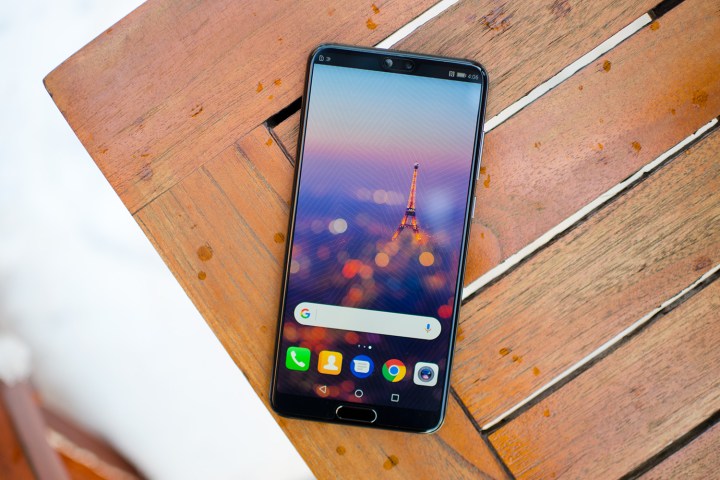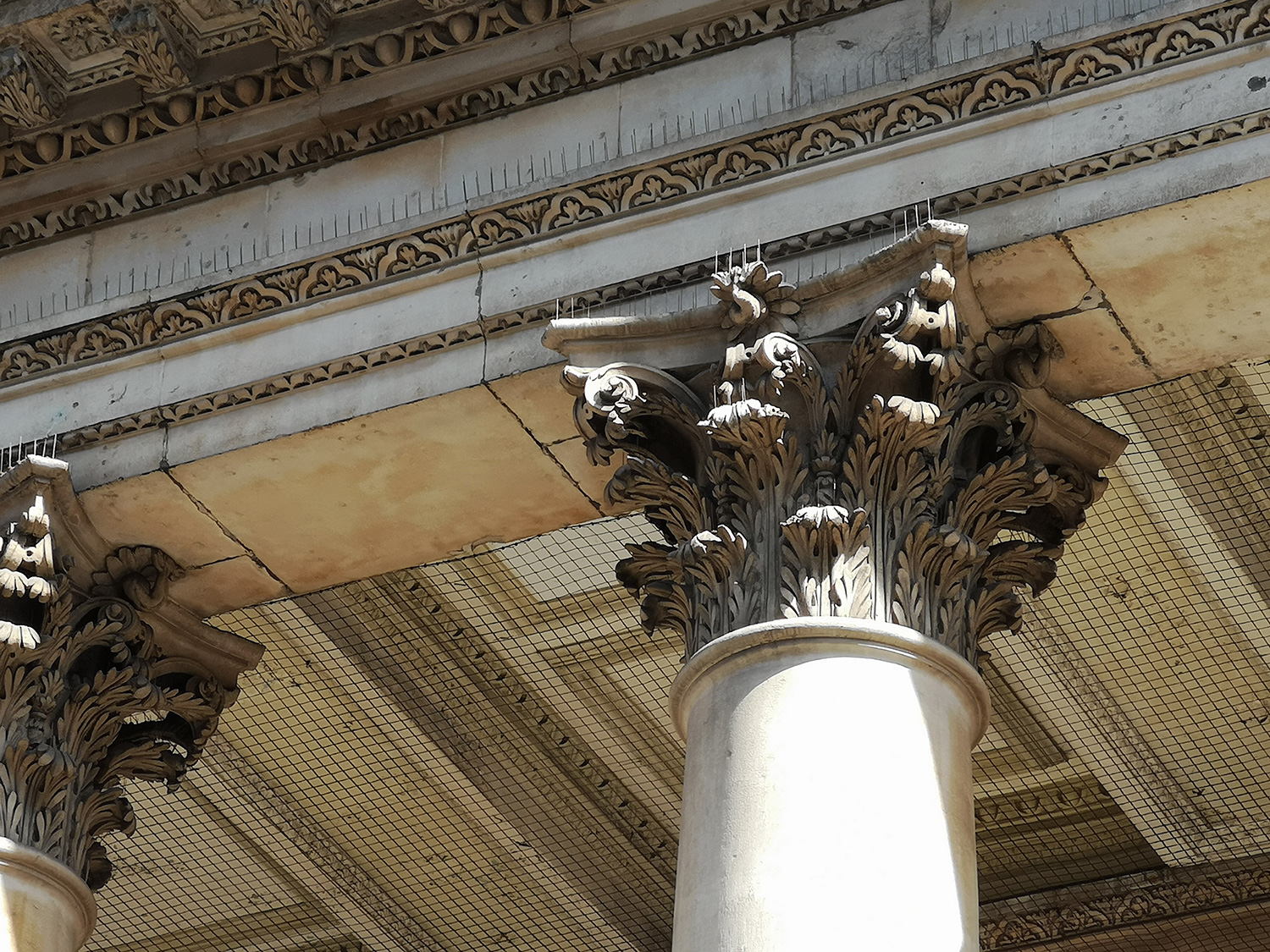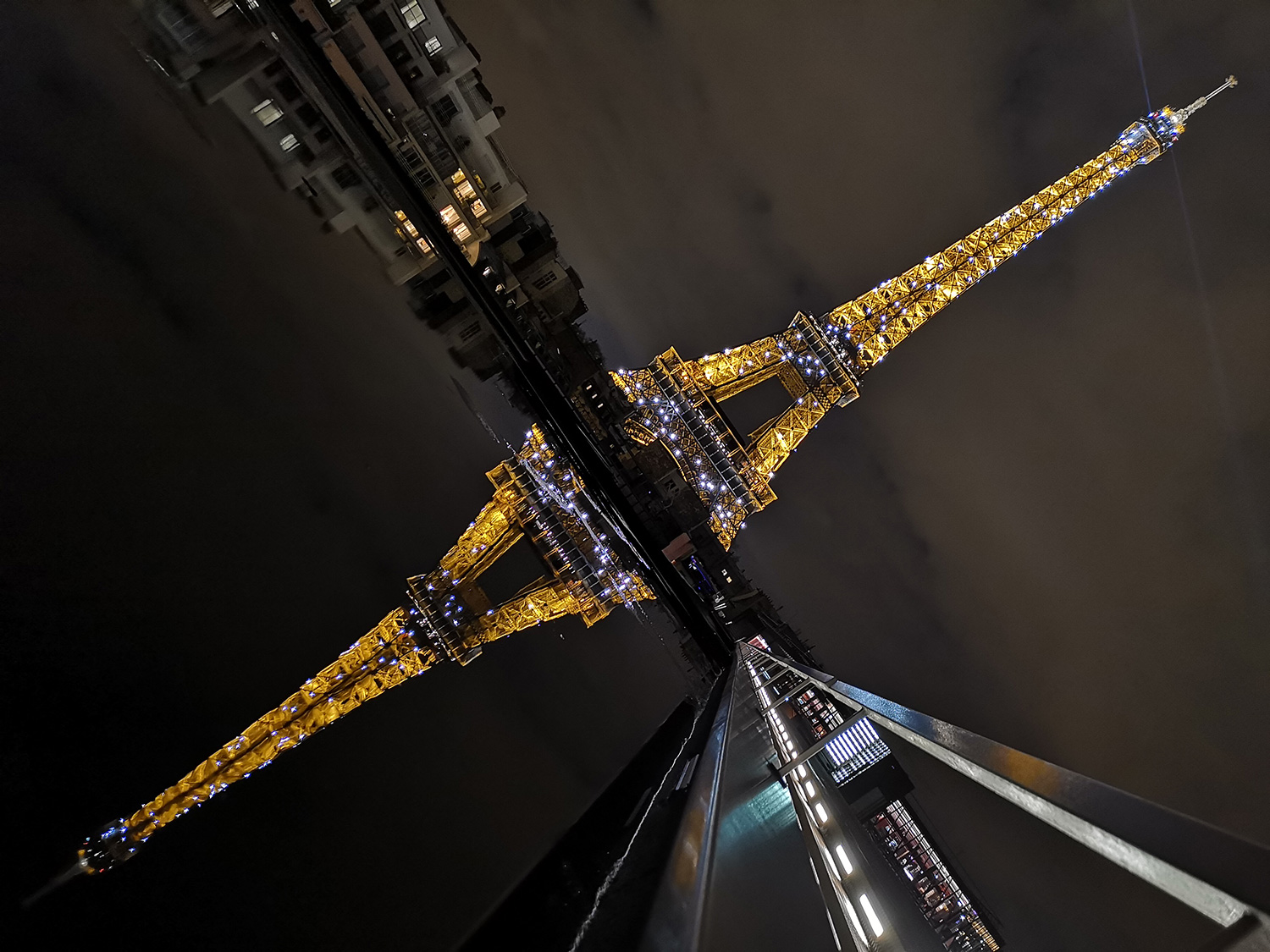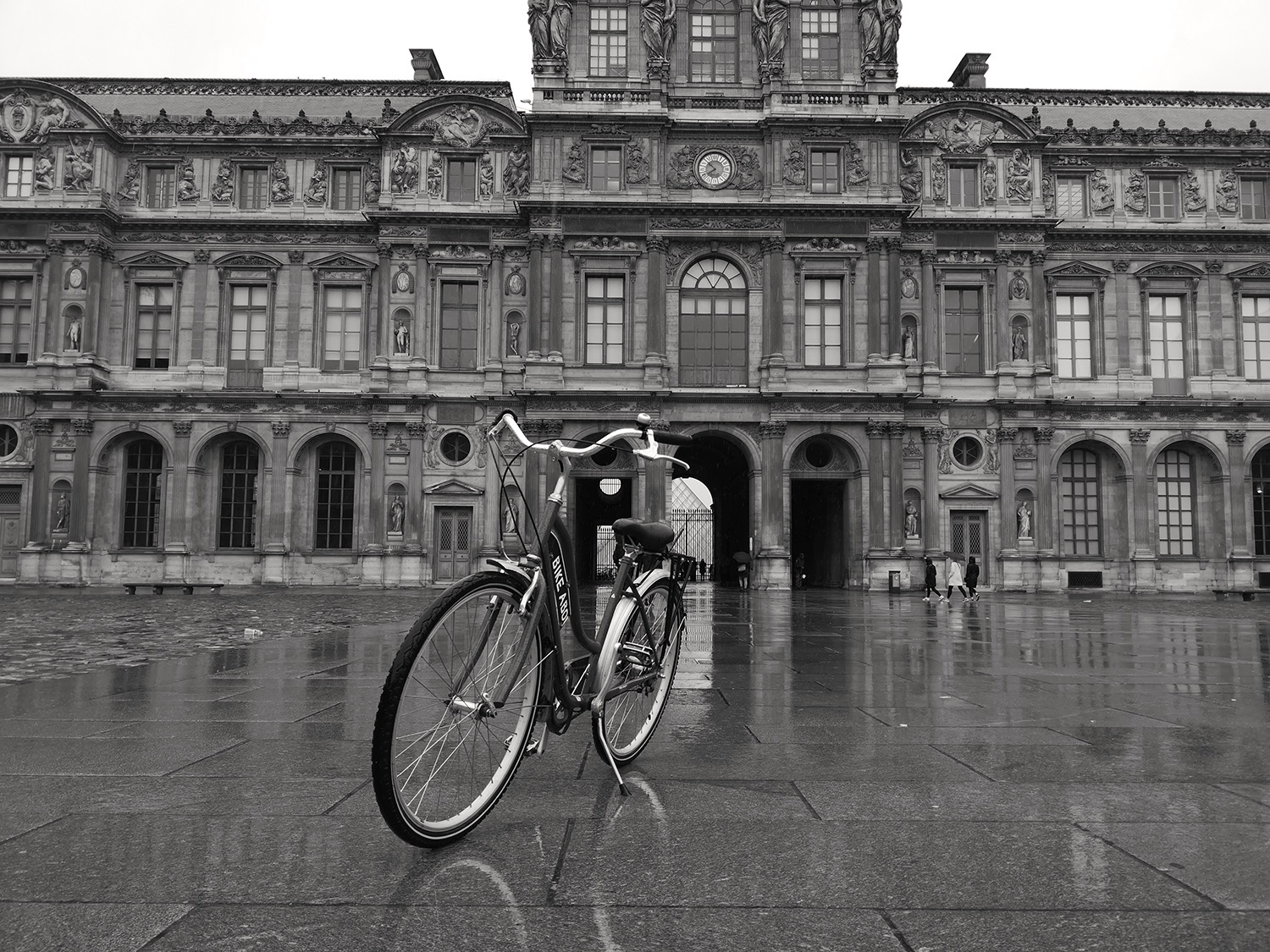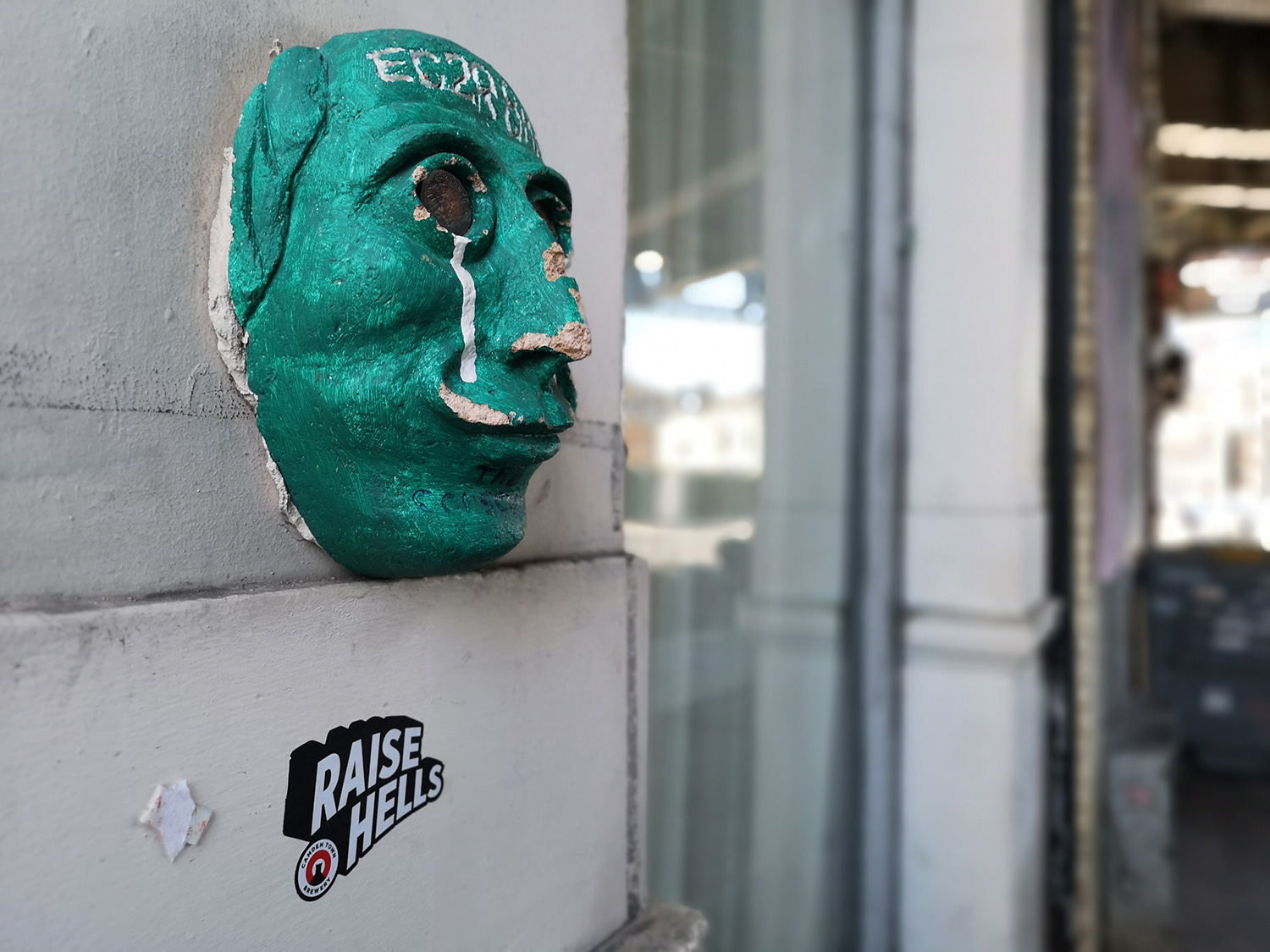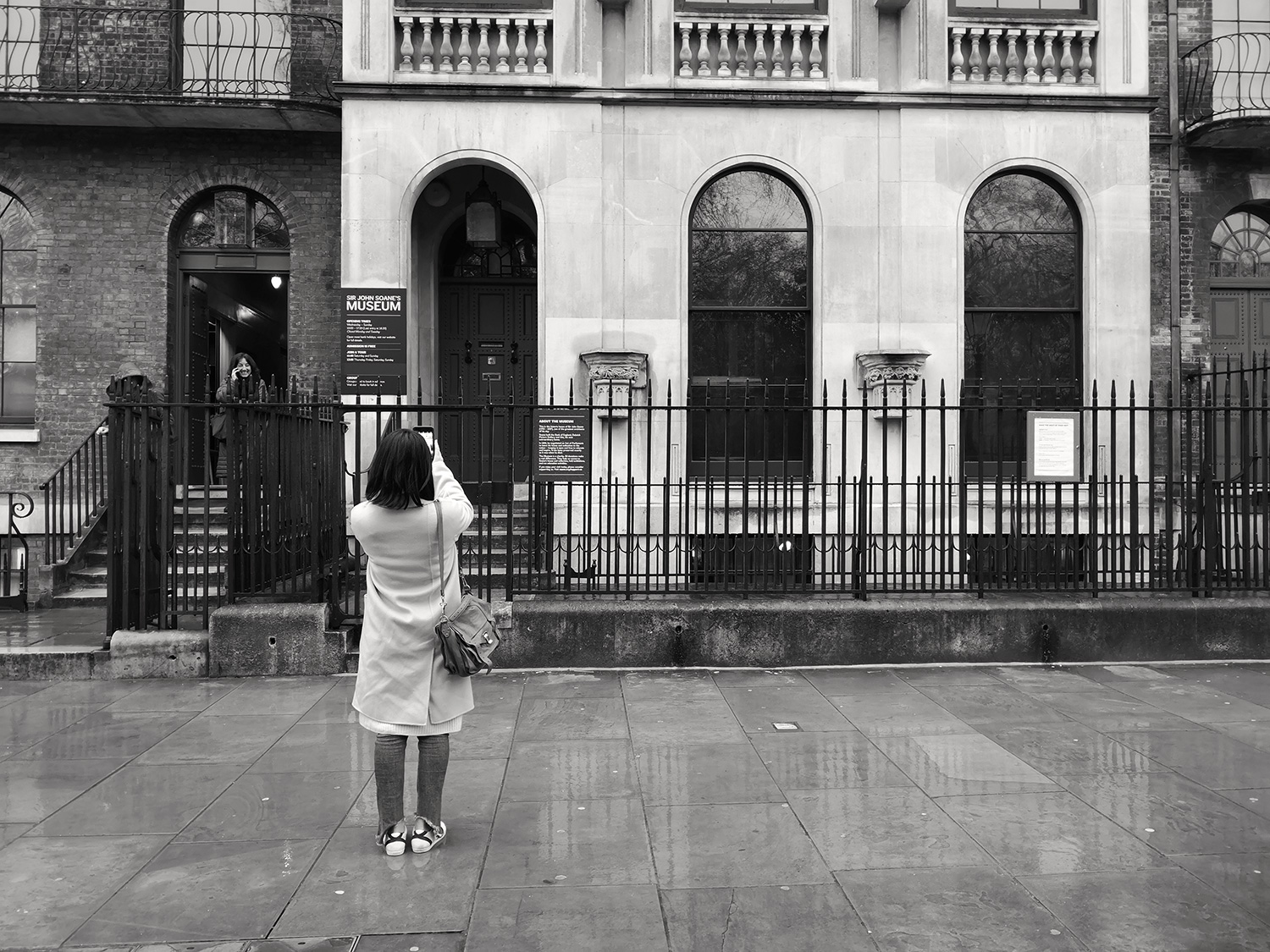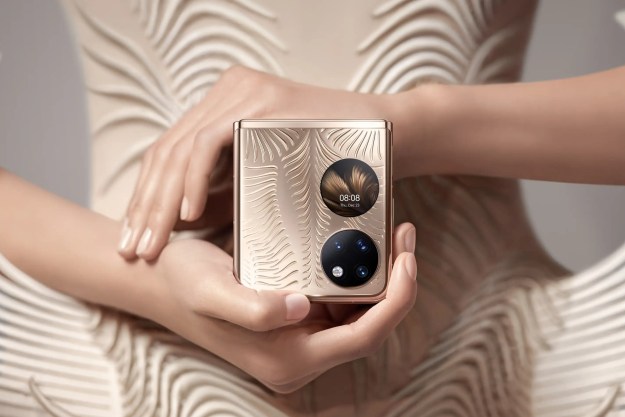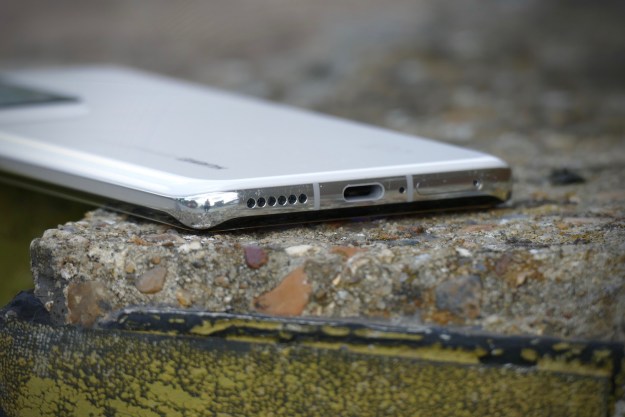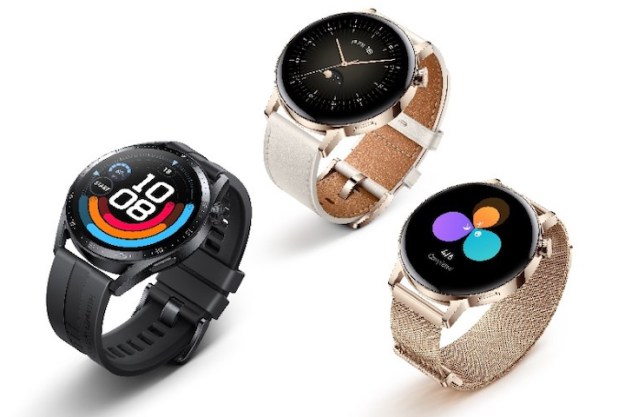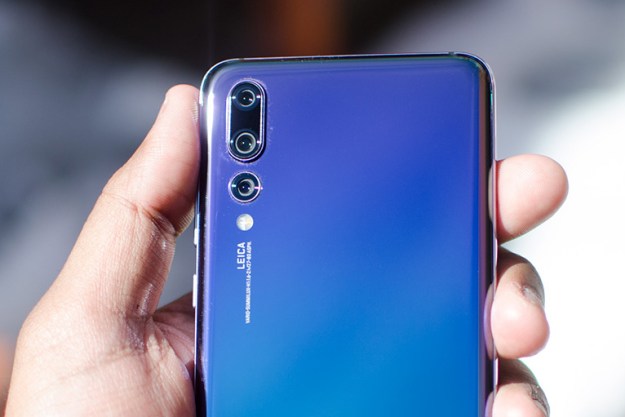
- Astonishingly capable camera
- Great design with eye-catching twilight color scheme
- Long-lasting battery
- Fast, capable performance
- Helpful artificial intelligence features
- Not available in the U.S.
- No wireless charging
Look carefully, and you can see the clear evolution of Huawei’s smartphones over the past few years. The Huawei P9 brought Leica onboard and dramatically improved software over the Huawei P8; then the Huawei P10 refined the formula and provided a more eye-catching design; and the great Mate 10 Pro introduced artificial intelligence to a further improved camera, along with monster battery life and a chip that turned it into a productivity powerhouse.
For the Huawei P20 Pro, the baby steps that produced the incremental updates above have turned into a massive, confident stride. The P20 Pro moves the company’s smartphone game forward greatly, through new features, new camera technology, superb build quality, and a swell design. This is the best phone we’ve handled, in every respect, from the Chinese brand. Everything we’ve enjoyed about the P9, P10, and Mate 10 Pro has been leading up to it, and it has absolutely been worth the wait.
However, while it’s Huawei’s best phone yet, how does it compare to the wealth of other astonishing smartphones released over the last six months? We’ve spent nearly two weeks using it to find out.
The Huawei P20 Pro isn’t the only phone the company just released. There’s also the more affordable Huawei P20, which doesn’t have a triple camera setup and has a few other specification differences. You can check out our specification comparison to learn more.
Triple camera
Taking photos with phones we review is a major part of the process; but I don’t think I’ve ever taken so many photos before as I have with the P20 Pro. It’s the most creatively inspiring and genuinely feature-packed smartphone camera we’ve ever used. It’s really that good.
The reason is it takes amazing pictures is thanks to the innovative three lens camera setup on the rear. It may sound gimmicky, but it’s not. The camera bump contains a 40-megapixel RGB color lens below an 8-megapixel telephoto lens, while the lens below the bump is a 20-megapixel monochrome lens. Also inside the camera bump is the laser transmitter and receiver for the auto focus system, while the flash until also contains a brand new color temperature sensor in the flash unit.
The P20 Pro is not just a smartphone, it’s a proper camera.
A technology called Pixel Fusion, which lets 4 times the amount of light into a pixel, helps create brighter photos; and the camera system uses all three lenses at once to greatly improve image sharpness. All three lenses will never work at full capacity together, so a magical 68-megapixel photo won’t be possible. Still, the main lens captures 40-megapixel photos, which is a lot of detail.
The telephoto lens has a 5x hybrid zoom capacity, with the optical zoom going to 3x, and then further enhanced digitally to 5x. Then there is even more artificial intelligence inside than we saw in the Mate 10 Pro, ready to do everything from altering the scene settings, to stabilizing shots, and helping you frame photographs correctly.
The Huawei P20 Pro lets you take sublime daytime shots, genuine monochrome pictures, stunning pictures at night without a tripod, zoom into a subject way closer than the competition can, and play with everything from super slow motion video to bokeh-style images and portrait shots. The P20 Pro is not just a smartphone, it’s a proper camera.
Points to note? Take a look at the three stage picture showing a building at standard focal length, 3x zoom, and 5x zoom. There is a fair amount of camera movement at 5x zoom from even the steadiest hand, but there’s no hint of shake or blur in the photograph. Then take a look at the two whisky glasses. This was shot in a dark bar. The first is with the P20 Pro’s aperture mode for some background blur. The second photo was with Night Mode, with the aperture open for about four seconds. Handheld, no tripod. The P20 Pro’s AI comes into play in both situations, and does a stellar job of creating stunning pictures few will believe aren’t doctored in some way.
All of this flexibility would be for nothing if the interface was a pain. Huawei has changed the camera app from the Mate 10 Pro, introducing a swipe-based mode changer above the shutter button. It’s mostly successful, but we’d like faster access to the Monochrome and slow motion video modes, which are hidden under a “More” option. Having the choice to add them to the main menu would be helpful.
Even in our time spent so far with the P20 Pro’s camera, we haven’t fully explored its true capabilities yet. There are more AI-driven scene recognition modes to try (19, over the 13 offered by the Mate 10 Pro), which only activate in specific situations. There’s also the 4D predictive, motion-based autofocus — where it tracks items in real time to keep them in focus. The super slow motion video mode, taking 960 frames per second video at 720p, is fun to play around with, but you really have to be faced with the right subject for it to shine. The best part is the P20 Pro makes us want to carry on using it to discover all these features, and more.
Huawei told Digital Trends its aim with the P20 Pro was to offer professional level camera equipment matched with true mobile ease of use. We’re very pleased to say it has achieved this lofty goal.
Notchy design
Huawei knows you’re going to be taking a lot of photos with the P20 Pro, so it has designed the phone’s rear to look its best in landscape orientation. The camera lenses are lined up horizontally this way. The body is made of glass, curving into a metal chassis; and we’re totally in love with the twilight color you see here. The gradient finish shifts from blue to purple with a hint of green, supposedly influenced by the Aurora Borealis, and it’s utterly delightful. Forget the fingerprints — for there will be many — and show this glorious color scheme off.
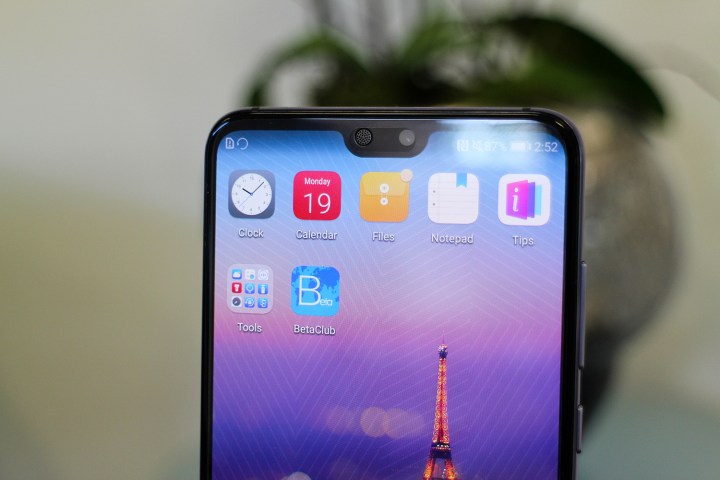
On the front is a notch at the top of the 6.1-inch OLED (2,240 x 1,080 pixel) screen. Yes, we know, it’s like the iPhone X. Except it’s not, because the notch doesn’t really serve a purpose. It’s a design decision, and Huawei’s pretty upfront about it. There’s a setting in the software to “hide” it by dropping the notification bar down below it, should you feel the need. When it’s not hidden like this, the icons, battery percentage, and time all look slightly squashed and smaller than usual. Like on the iPhone X, we’ve already forgotten about the notch, as you get used to the design.
At the opposite end of the screen is something unexpected — a fingerprint sensor. It had to go somewhere, and on the back would spoil that wonderful camera-like aesthetic. It’s quite low though, and anyone with big hands may find the phone teetering on the edge of their fingers in a concerning manner. It’s ultra-fast; but there are times when your finger won’t even reach it before the phone has already unlocked, thanks to the P20 Pro’s Face Unlock.
Yes, we know, it’s like the iPhone X. Except it’s not, because the notch doesn’t really serve a purpose.
No, it’s not a secure system like the iPhone X, it’s a convenience feature and oh, the convenience. A cursory glance in the phone’s direction unlocks it instantly, and we mean instantly. If you’re wondering about an in-display fingerprint sensor, the Porsche Design Huawei Mate RS has one, sort of. It’s a part of the design, but in the version we used at the P20 launch event, it wasn’t available, so it wasn’t quite ready for use. Expect it in a future, more mainstream Huawei phone.
The P20 Pro has IP67 water resistance, but the standard P20 makes do with IP53. Both are missing a 3.5mm headphone jack. A dongle is included in the box, or you can use Bluetooth — there’s support for Qualcomm’s AptX HD, boosting the wireless audio ability; but sadly the phone only uses Bluetooth version 4.2, instead of Bluetooth 5.
EMUI software, OLED screen
The Huawei P20 Pro has Android 8.1 Oreo installed with the March 2018 security update, and Huawei’s own EMUI 8.1 user interface layered on top. It’s no longer the bugbear it once was, and Huawei has even stripped away some of the irritations that were creeping back in on the Mate 10 Pro.
It no longer constantly warns you about power-consuming apps, for example, and the notification shade isn’t cluttered with dubious advice and reminders. The standard display shows all the apps across multiple home screens, but the option to add an app drawer is there if you prefer. The Settings menu is different to stock Android seen on the Google Pixel 2, but it’s no more of a deviation than Samsung or LG’s user interface.
We’re going to nitpick here. The notch forces some visual weirdness in certain apps, particularly Google’s own, where it never seems to fit quite right. And it’s annoying that when we open the camera app, the arrow signifying the mode is never aligned underneath Photo, but somewhere in-between it and Portrait. Some notifications don’t render correctly either, appearing too large or bizarrely aligned. These are small points that don’t actually matter in use, but do detract from the P20 Pro’s overall polish. We expect many of these problems to be fixed via software updates, and things will likely get even better when the P20 Pro gets Android P, since the upcoming Android version supports phones with notches.
The artificial intelligence features work mostly in the background, speeding up the system by understanding which apps you use frequently, and managing power and battery resources effectively. It also works to organize images in the Gallery app. You won’t notice it working on a daily basis, but over time it should keep the phone in optimal condition.
A complaint with the Mate 10 Pro was not being able to turn off the AI-based scene alterations in the camera, which has been fixed with the P20 Pro, so now you can see the difference it makes. The AI is even faster than the Mate 10 Pro here too, recognizing scenes with incredible speed, especially compared to the LG V30S ThinQ, which doesn’t benefit from onboard artificial intelligence processing.
The large OLED screen is not retina-searingly bright, but it’s visible in daylight, and looks great when viewing photos and video, with excellent color reproduction and contrast levels. Huawei has added different settings for color temperature, tones, and an eye comfort mode ready for night use, so tailoring it to your preference is simple.
Great performance and fantastic battery life
Two days, that’s what regular people will get from the P20 Pro’s 4,000mAh battery. We took dozens of pictures, various slow-mo videos, used social networking apps and email, and connected the phone to a Wear OS smartwatch, and the P20 Pro happily lasted from 8am on day one to past 8pm on day two, with an overnight stint in airplane mode.
Two days, that’s what regular people will get from the P20 Pro’s 4,000mAh battery.
Sure, if you add GPS navigation, gaming, and music or video streaming, then you’ll get less time out of the phone; but under general usage with a mix of activities, you won’t need to visit the charger until late on the second day. Even if you do, Huawei’s SuperCharge system takes the battery from zero to full in about 90 minutes, plus you can activate the power management systems to extend the phone’s life way beyond two days standby.
The biggest downside here is that despite the glass body, there is no wireless charging on the P20 Pro. It’s a feature available on many of its competitors, such as the Galaxy S9, and the iPhone X.
Internally, the P20 Pro is very similar to the Mate 10 Pro. That means a Huawei-designed octa-core Kirin 970 processor and the Neural Processing Unit (NPU), 6GB of RAM, and 128GB of internal memory. The software has been refined though, and the benchmark figures reflect some of the changes.
- Geekbench 4: 1,922 single-core; 6,794 multi-core
- AnTuTu 3D: 210,342
- 3DMark Sling Shot Extreme: 2,935
For comparison, the Mate 10 Pro scored 176,544 on AnTuTu, 6,716 multi-core on Geekbench 4, and 2.937 on 3DMark’s Sling Shot Extreme. We experienced no performance problems with games, or system stability issues during day-to-day use.
Price, availability, and warranty
Looking forward to buying the Huawei P20 Pro? If you live in the U.S., you can’t. Huawei never brought its P-series smartphones to the U.S., but there’s also a current battle between official bodies alleging Huawei phones may represent a security risk. This is currently unsubstantiated, and clearly not a concern elsewhere in the world, where the P20 Pro is available both unlocked without a contract, and through multiple major networks. It’s not clear whether this will be resolved favorably for Huawei in the near future.
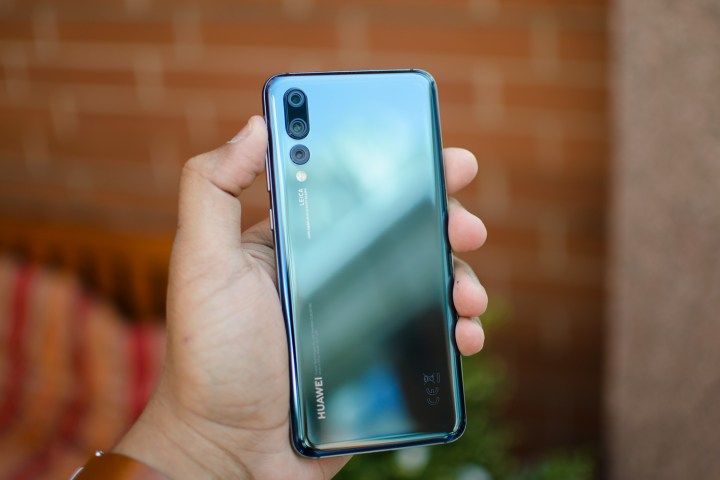
It’s a crushing shame, as you, the consumer, is losing out. You can buy one as an import, but that comes with its own set of problems, and is obviously not a route for anyone not technically inclined. Huawei has priced the P20 Pro at 900 euros, or 800 British pounds in the U.K., putting it up against the Samsung Galaxy S9 Plus, the Google Pixel 2 XL, and the iPhone X.
Huawei’s warranty in the U.K. covers the phone for 24 months, or six months for the charger and battery. You may have to return devices to Huawei for repair or replacement, and the usual wear and tear isn’t covered, along with a device that has been mistreated or taken apart. If you privately import a P20 Pro into the U.S., any warranty probably won’t apply. In the U.K. the Huawei P20 Pro is available for purchase on April 6.
Our Take
The Huawei P20 Pro is the best Android smartphone we’ve used this year, with an exciting, fun camera, a gutsy battery, and drop-dead good looks. It’s a damn shame you (ridiculously) can’t officially buy one if you live in the U.S.
What are the alternatives?
Huawei wants to draw your eye away from the Samsung Galaxy S9 Plus and the Apple iPhone X with the P20 Pro. The $840 Galaxy S9 Plus and the $1,000 iPhone X are both capable, refined, and desirable. The $850 Google Pixel 2 XL is the Android connoisseurs choice, and benefits from a cleaner standard Android software experience.
Because the Huawei P20 Pro isn’t officially available in the U.S., we have no choice but to push you in the direction of the Google Pixel 2 XL, which also has an excellent camera, plus it receives timely software updates from Google.
How long will it last?
If you purchase the P20 Pro with a contract (where available) the phone will happily last for two years. It won’t stop working after that time, but mobile technology moves at a pace that will ensure something suitably enticing will be available to buy at that point, should you feel like upgrading. It’s also water resistant enough to survive a quick dunk, and provided you put the glass body in a case, it won’t break in the event of a fall.
The software is up to date right now, but Huawei isn’t great at delivering updates. Our U.K. Mate 10 Pro is on Android 8.0 with EMUI 8.0, and Google’s January 2018 security patch, for example. Not terrible, but not great for a flagship phone either. For comparison, our Galaxy S9 Plus also has Android 8.0, but with the March 2018 Android security update, while the Pixel 2 has Android 8.1 and the April 2018 security patch.
Should you buy it?
Should you buy the Huawei P20 Pro? Yes. Right this minute. The camera is more innovative and exciting, the body is more attractive (in the right color), and the battery more long-lasting than any other major Android smartphone released in 2018. If the P20 Pro is available where you live, you’ll own Huawei’s first true alternative to the established Android big guns, and we wholeheartedly recommend it.
Now, if you’ll excuse us, we’re going out to take more photos with the P20 Pro.
Editors' Recommendations
- The best iPhone 15 Pro Max cases in 2024: the 20 best ones
- The best Google Pixel 8 Pro cases in 2024: 20 best ones
- Huawei’s Mate 50 Pro is here with an insane 200x zoom
- TicWatch Pro 3 Ultra hands-on review: Amazing battery life
- Wedge-shaped MateBook X Pro headlines Huawei’s MWC lineup


